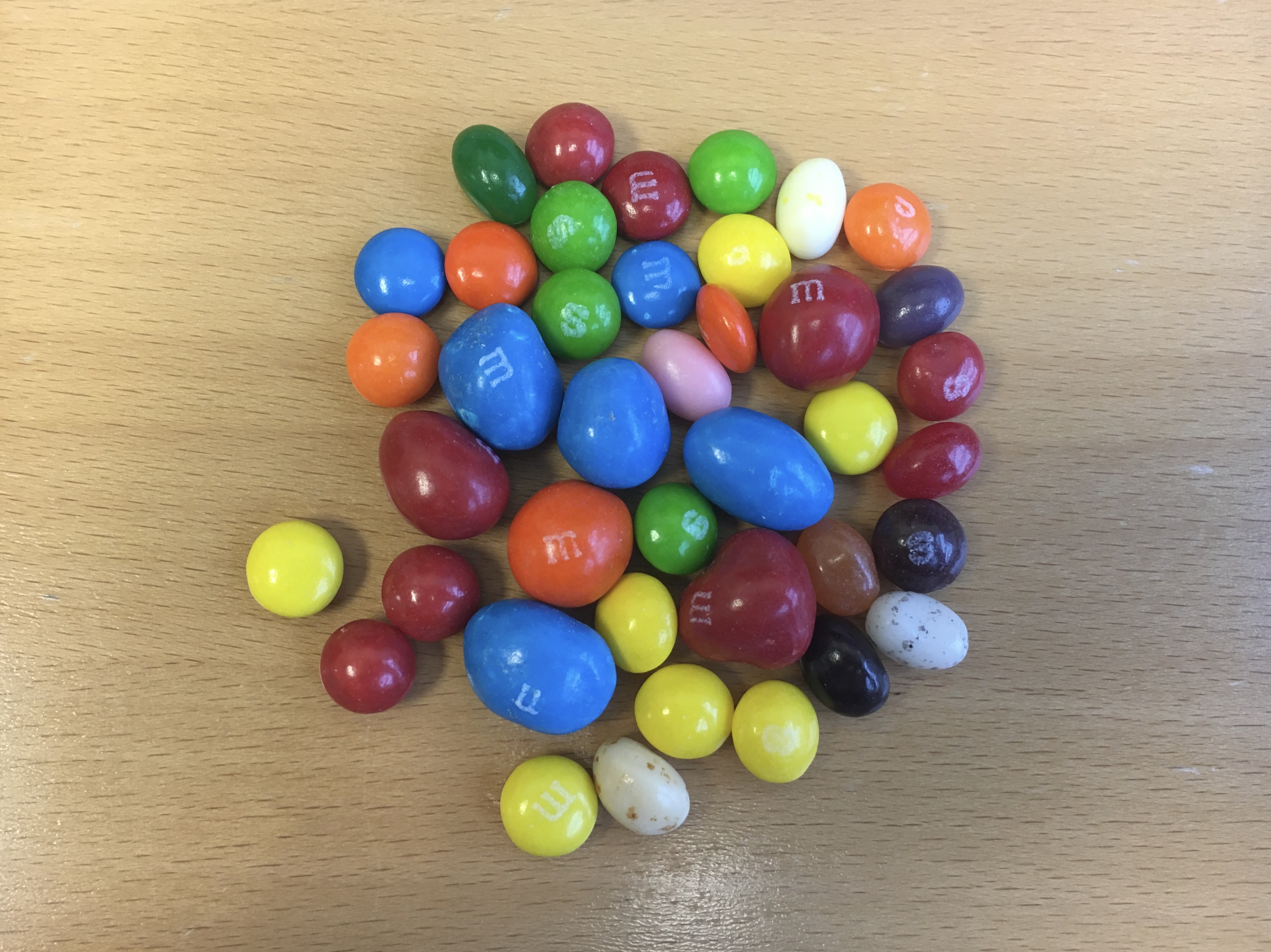Problem Set-up: Classifying Candy
Overview
Teaching: 5 min
Exercises: 0 minQuestions
We have a box of candies all mixed up together. What now
Objectives
Introduce learners to the problem to be solved throughout this lesson.
You and two friends, Sarah and Michael, are planning a joint birthday party together. “Good news!”, you tell your friends. “The local supermarket had large bags of different types of candies on special offer, and I bought enough for the party!”
You bought ten-pound bags of peanut M&Ms, plain M&Ms, skittles and jellybeans, each.
But: “I poured them all into the big storage box we have in the kitchen”, you tell your friends, who suddenly look horrified.
“Oh no!”, says Sarah, “My friends from the Skittles Appreciation Society are coming! They’ll be super annoyed if they find M&Ms with their skittles!”
“Yeah”, Michael agrees, “and we’ve got both peanut and plain M&Ms. What if some of our guests have a peanut allergy?”
You get a bowl of the candy from the container and look at them:
“This is a disaster!”, you admit, despairing over the task in front of you.
So what to do now? Sorting forty pounds of small pieces of candy sounds extremely tedious and time-consuming. Your friend Sarah–an engineering student–turns thoughtful.
“What if we build a robot to sort the candy?” That seems like a great idea.
“But how is the robot going to know which is which if we don’t tell it?”
Michael has an idea: “I’ve recently learned about machine learning! Maybe we can train a computer to distinguish between the different types of candies, and that computer can tell the robot into which bin each belongs.”
You have a plan!
Key Points
Having the candies mixed up together is bad, and we want to use machine learning to fix it.
